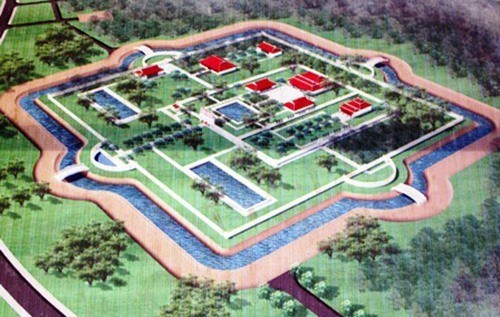The mausoleum was built by King Gia Long in 1803 as a place of worship of the ancestors of the nine lords and 13 kings of the Nguyen Dynasty, which lasted from 1802 to 1945. It has special architectural and artistic value.
In the second phase of excavations, scheduled from 2018 to 2019, the excavation team will work on a total area of 4,000sq.m, which is bigger than the 2,800sq.m covered by the first phase.
The province has set aside VND 42.7 billion (USD 1.88 million) to be spent on expenses for research, relocation support for displaced families, and moving the national highway which runs across the relic site, among others.
    |
 |
|
The restoration plan of Trieu Tuong Mausoleum Site. Photo: hatrung.thanhhoa.gov.vn |
The whole site, located in Ha Trung district, the hometown of the Nguyen Dynasty, will be excavated, including the gates facing the four directions, temples, lakes, and wells mentioned in ancient documents.
The project aims to restore the ancient citadel, Trieu Tuong Temple, Gia Mieu Communal House, and Ong Communal House, as well as the Nguyen Huu Family Worship House. It will also provide facilities for tourists visiting the site.
Authorities are expected to complete excavations and rebuild constructions on the inner mausoleum area by 2020.
Many historians consider the site to be a smaller version of the Hue Imperial Citadel. It includes many buildings inside a complex with a total area of 50,000sq.m, surrounded by lakes and brick bridges.
According to documents, two layers of walls surrounded the site like a citadel. The inside space is divided into three main areas. The middle portion is composed of temples dedicated to Nguyen Kim (1468-1545) and Nguyen Hoang (1525-1613), the ancestors of Nguyen kings. The eastern part of the site hosts a temple dedicating to Trung Quoc Cong (General) Nguyen Hoang Du (?-1518), the father of Nguyen Kim, while the Western portion was reserved as a residential area for mandarins, soldiers, and families guarding the mausoleum.
The Trieu Tuong Mausoleum Site has deteriorated completely over time, and now only its foundation remains.
Source: VNA